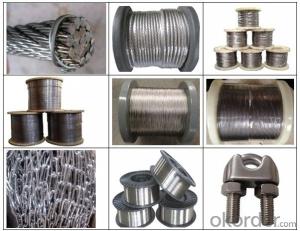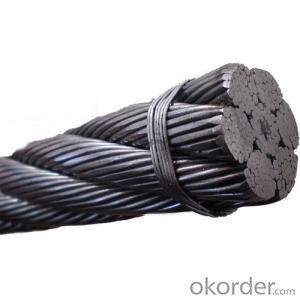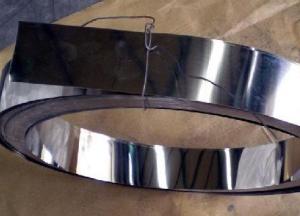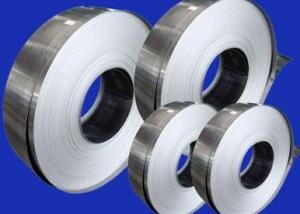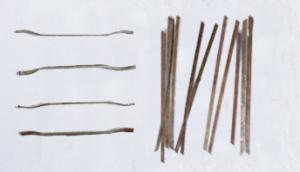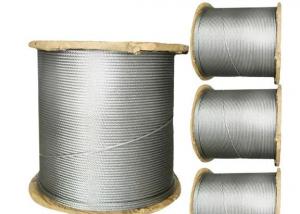8mm Hot Rolled Low Carbon Steel Wire Coil/Steel Wire Rod
- Loading Port:
- Qingdao
- Payment Terms:
- TT OR LC
- Min Order Qty:
- 40 m.t.
- Supply Capability:
- 20000 m.t./month
OKorder Service Pledge
OKorder Financial Service
You Might Also Like
Item specifice
8mm Hot Rolled Low Carbon Steel Wire Coil/Steel Wire Rod
Specification
Name | 8mm hot rolled low carbon steel wire coil/steel wire rod |
Standard | GB, SAE, SGS, ASTM |
Diameter | 8mm |
Coil weight | 1.8-2.1tons |
MOQ | 40tons |
Deliver Time | 15 days after receipt of L/C or deposit by T/T |
Packing | In coil and load in container, if large quantity, by bulk vessel; can be packed as customers' special requirements |
Payment terms | 1).100% irrevocable L/C at sight.2).30% T/T prepaid and the balance against the copy of B/L.3).30% T/T prepaid and the balance against L/C |
Application | Building material, machinery parts |
Chemistry of material based on SAE1006B and SAE1008B
Grade | Chemical Composition(%) | |||||
C | Mn | Si | S | P | B | |
SAE1006B | 0.03~O.07 | ≤0.32 | ≤0.30 | ≤0.045 | ≤0.040 | >0.0008 |
Mechanical properties | ||||||
Yield strength(N/mm2) | Tensile strength(N/mm2) | Elongation(%) | ||||
250-280 | 350-380 | ≥32 | ||||
Grade | Chemical Composition(%) | |||||
C | Mn | Si | S | P | B | |
SAE1006B | 0.03~O.07 | ≤0.32 | ≤0.30 | ≤0.045 | ≤0.040 | >0.0008 |
Mechanical properties | ||||||
Yield strength(N/mm2) | Tensile strength(N/mm2) | Elongation(%) | ||||
250-280 | 350-380 | ≥32 | ||||
Why we are your best choice in China:
1. We are a professional MANUFACTURE of Prestressed Concrete steel wire (PC wire) and Steel wire rod in China.
2.Now our company has 8 advanced production lines and a whole set of product detecting instruments.
3.We have exported less than 50,000 tons abroad and this year we will make a better achievement.
4.We provide the best payment condition and Short Delivery Time.
FAQ:
1, Q: What's the Payment method?
-A: L/C at sight or T/T.
2, Q: What's the Delivery port?
-A: The main ports are Qingdao and Tianjin, we also can deliver to other ports to meet your requirements
3, Q: What's the delivery time?
-A: 15days upon receipt of advance deposit.
Products Show
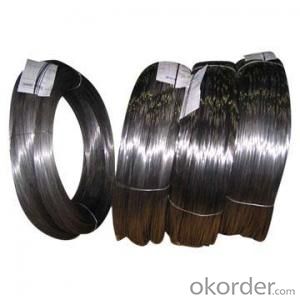
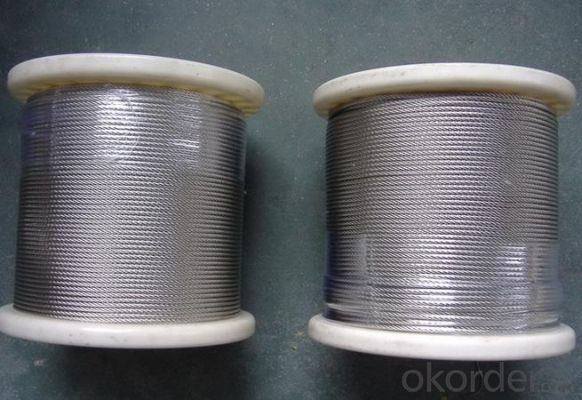
- Q:Can stainless steel wire be coated or plated?
- Yes, stainless steel wire can be coated or plated. Coating or plating stainless steel wire can provide additional benefits such as enhanced corrosion resistance, improved aesthetic appearance, and increased durability. There are various coating and plating options available, including electroplating, hot-dip galvanizing, powder coating, and PVD (Physical Vapor Deposition) coating, among others. These processes involve depositing a thin layer of another metal or material onto the stainless steel wire's surface. This layer can offer different properties depending on the desired outcome, such as increased resistance to chemicals, improved conductivity, or a specific color or finish. Coating or plating stainless steel wire can be done to meet specific requirements for various industries, including automotive, construction, electronics, and medical applications, among others.
- Q:Why does the stainless steel hydrogen return wire rust?
- Stainless steel hydrogen withdrawal silk surface adhesion contains acid, alkali, salt substances (such as decoration wall caustic soda, lime water splash), cause some corruption.
- Q:What are the different types of stainless steel wire electrodes?
- Various welding applications commonly use several different types of stainless steel wire electrodes. The choice of electrode depends on the desired welding characteristics and the intended application. One type frequently used is the ER308L stainless steel wire electrode, which is designed for welding 18% chromium - 8% nickel stainless steels like types 301, 302, 304, and 305. It has excellent corrosion resistance and can weld similar or dissimilar stainless steels. Another popular option is the ER309L stainless steel wire electrode, specifically designed for welding 300 series stainless steels to carbon or low alloy steels. It provides high strength and resistance to cracking, making it suitable for joining dissimilar metals. For high-temperature environments, the ER310 stainless steel wire electrode is commonly used. It is designed for welding heat-resistant stainless steels like types 310, 314, and 446, offering excellent resistance to scaling and oxidation at elevated temperatures. Specialized applications also have stainless steel wire electrodes available. For instance, the ER316L stainless steel wire electrode is designed for welding molybdenum-bearing austenitic stainless steels such as type 316. It offers superior corrosion resistance and is prevalent in the chemical and petrochemical industries. Overall, the various types of stainless steel wire electrodes possess different characteristics and properties suitable for diverse welding applications. Selecting the appropriate electrode based on project requirements is crucial to achieve optimal results.
- Q:Can stainless steel wire be used for wire rope sleeves?
- Indeed, wire rope sleeves can indeed utilize stainless steel wire. Renowned for its exceptional resistance to corrosion and impressive strength, stainless steel proves to be a fitting substance in a plethora of uses, including wire rope sleeves. These sleeves, crafted from stainless steel wire, are frequently employed to establish a firm and resilient link between wire rope and assorted components. Their purpose lies in safeguarding and bolstering the wire rope, thereby averting any potential harm or deterioration. Furthermore, stainless steel wire rope sleeves boast remarkable endurance and longevity, rendering them an optimal selection across diverse sectors like marine, construction, and transportation.
- Q:What's the difference between stainless steel tube polishing and stainless steel wire drawing?
- The advantages of this way is polishing equipment is relatively simple, easy to operate, does not need auxiliary chemicals, the disadvantage is not for seamless light tube in polishing, prone to scratches and improper disposal, time-consuming.Fluid polishing, fluid polishing is to rely on high-speed flow of liquid and its carrying abrasive particles washing stainless steel square tube surface, to achieve the purpose of polishing. Commonly used methods are: abrasive jet processing, liquid jet processing, fluid power grinding, fluid magnetic power grinding, etc.. Fluid power grinding is hydraulically driven to allow liquid media carrying abrasive particles to flow back and forth across the steel tube at high speed. The medium is mainly made of special compound (polymeric substance) flowing under low pressure and mixed with abrasives, and the abrasive can be made of SiC powder. The advantages of the polishing method are that the light intensity is higher, and the inner wall of the stainless steel square pipe can be polished, and the disadvantage is that the other pipe can be ejected one by one, and the work efficiency is low.
- Q:What is brushed stainless steel?
- Generally speaking, most of the stainless steel surface treatment suitable for throwing Matt, bright and mirror, there are very few suitable for drawing, these are suitable for drawing stainless steel, commonly known as "brushed stainless steel."
- Q:How is stainless steel wire mesh woven?
- To manufacture stainless steel wire mesh, one can utilize either the plain weave or twill weave technique. In the plain weave method, the wires are woven in a manner where they crisscross each other, passing alternately over and under the adjacent wires. This creates a mesh structure that is both straightforward and tight. On the other hand, the twill weave method involves interlacing the wires in a diagonal manner, which imparts a sturdier and more resilient construction to the mesh. This particular weaving technique requires each wire to pass over two adjacent wires and then under two adjacent wires, resulting in a distinct diagonal pattern. Whether employing the plain weave or twill weave approach, both methods demand meticulousness and close attention to ensure a consistent and uniform mesh structure. Typically, thin yet durable wires are utilized in the production of stainless steel wire mesh. This enables the creation of a tightly woven and dependable mesh that demonstrates resistance to corrosion and wear. All in all, creating stainless steel wire mesh involves the interlacing of thin stainless steel wires in either a crisscross or diagonal pattern. This yields a versatile and long-lasting mesh that discovers applications in various industries, including filtration, screening, and protection.
- Q:Is stainless steel wire resistant to wear and tear?
- Stainless steel wire exhibits remarkable resistance to wear and tear, which can be attributed to its exceptional strength and durability. Its corrosion resistance is further enhanced by the presence of alloying elements like chromium and nickel, rendering it impervious to rust, oxidation, and staining. Moreover, stainless steel wire possesses high resilience, enabling it to endure heavy loads, bending, and twisting without compromising its shape or strength. This innate resistance to wear and tear renders stainless steel wire suitable for diverse industries, including construction, automotive, aerospace, and marine. In these sectors, it finds extensive use in applications demanding cables, springs, mesh, and more.
- Q:What are the different types of stainless steel wire used in musical instruments?
- There are several types of stainless steel wire used in musical instruments, including 302, 304, and 316 stainless steel. Each type offers different levels of corrosion resistance and strength, making them suitable for various applications in musical instrument construction.
- Q:Can stainless steel wire be used for wire brushes?
- Yes, stainless steel wire can be used for wire brushes. Stainless steel wire is known for its strength, durability, and corrosion resistance, making it a popular choice for various applications, including wire brushes. The stainless steel wire bristles are able to effectively remove dirt, rust, and other debris from surfaces without scratching or damaging them. Additionally, stainless steel wire brushes are suitable for use in both wet and dry conditions, making them versatile for various cleaning and polishing tasks.
1. Manufacturer Overview |
|
|---|---|
| Location | |
| Year Established | |
| Annual Output Value | |
| Main Markets | |
| Company Certifications | |
2. Manufacturer Certificates |
|
|---|---|
| a) Certification Name | |
| Range | |
| Reference | |
| Validity Period | |
3. Manufacturer Capability |
|
|---|---|
| a)Trade Capacity | |
| Nearest Port | |
| Export Percentage | |
| No.of Employees in Trade Department | |
| Language Spoken: | |
| b)Factory Information | |
| Factory Size: | |
| No. of Production Lines | |
| Contract Manufacturing | |
| Product Price Range | |
Send your message to us
8mm Hot Rolled Low Carbon Steel Wire Coil/Steel Wire Rod
- Loading Port:
- Qingdao
- Payment Terms:
- TT OR LC
- Min Order Qty:
- 40 m.t.
- Supply Capability:
- 20000 m.t./month
OKorder Service Pledge
OKorder Financial Service
Similar products
New products
Hot products
Related keywords
